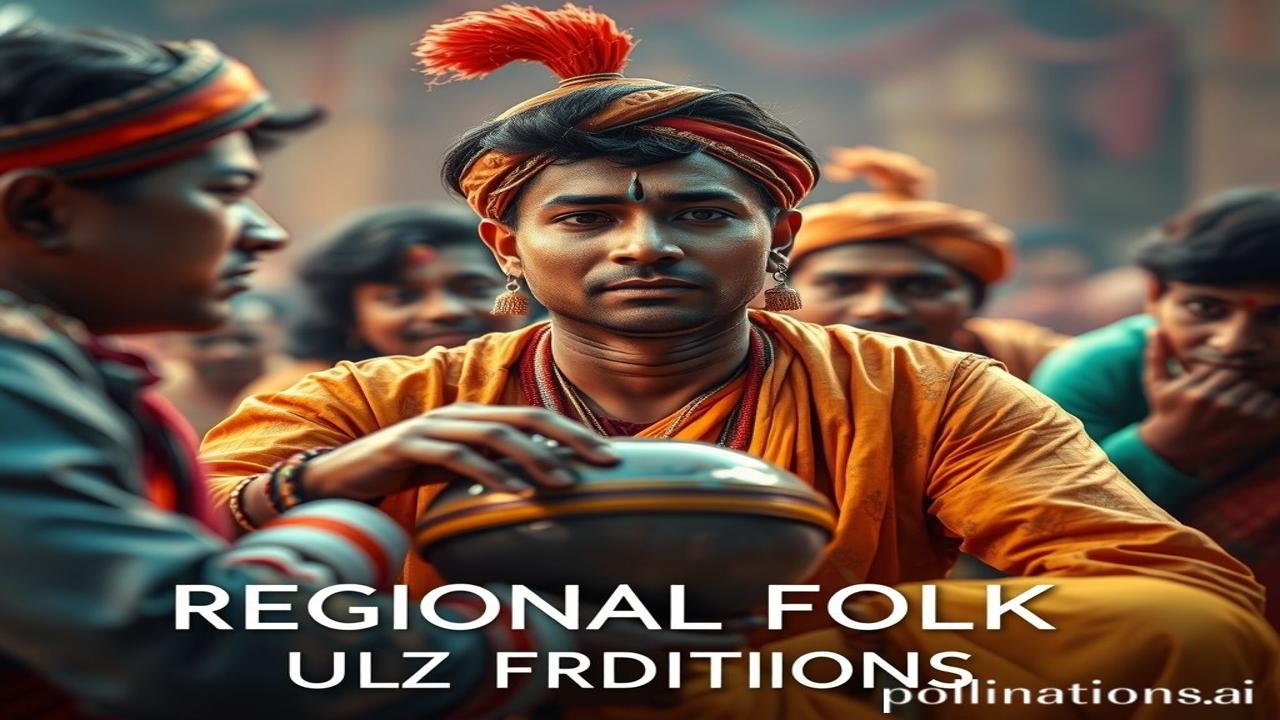Dhool Bhari Panna: Regional Folk Music – The Soul of India Whispering in Every Note
Kabhi socha hai, jab koi bhajan sunte ho ya koi gaon ka geet, toh woh sirf awaaz nahi hoti. Woh ek safar hota hai… ek safar uss mitti ki taraf, jahan se woh geet janma hai. Imagine yourself standing in a bustling village square, the scent of freshly baked rotis and jasmine flowers mingling in the air. The sun beats down, but a group of women, clad in vibrant sarees, are singing a song about the monsoon, their voices echoing centuries of tradition. Yehi hai Bharat ki atma, uski regional folk music.
The Timeless Melody: Kya Hai Yeh Folk Music Aur Kahan Se Aayi?
So, what exactly is regional folk music? It’s the music of the people, by the people, for the people. It’s the oral tradition passed down through generations, a living tapestry woven with stories, emotions, and the very essence of a region. Think of it as a musical diary, chronicling the joys, sorrows, and everyday lives of ordinary folk.
Its origin is as diverse as India itself. Each region has its own unique style, influenced by its history, geography, and cultural practices. While pinpointing exact dates is difficult (oral tradition doesn’t leave much in the written record!), we can say that many of these traditions have roots stretching back centuries, some even to ancient times. For instance, the Baul music of Bengal, with its wandering minstrels and spiritual themes, has connections to 15th-century Sufi and Bhakti movements. Similarly, the Lavani of Maharashtra, known for its energetic dance and often provocative lyrics, evolved from the military camps of the Maratha empire. These melodies are important because they are living examples of our cultural inheritance.
Gaon Ki Galiyon Mein: The Heartbeat of the People
Imagine a Rajasthani village, the desert sun blazing overhead. A farmer, sweat dripping from his brow, plows his field, humming a panihari song – a tune dedicated to the women who carry water long distances. In the evening, the village gathers around a bonfire. A bhopa, a wandering storyteller, begins to narrate the tale of Pabuji Rathore, a local hero, through song and dance. His ravanhatta, a stringed instrument, wails a mournful tune, captivating the audience.
Ya phir, picture this: Ma Rukmini ne aaj naye kapde pehne, kyunki mandir mein utsav tha. The air is thick with the smell of incense and the sound of temple bells. The villagers are singing bhajans, their voices rising in unison, offering their devotion to the deities. The rhythmic beat of the dholak and the tinkling of the manjira fill the air, creating an atmosphere of spiritual ecstasy.
These weren’t just performances; they were integral parts of life. They marked births, marriages, harvests, and deaths. They offered solace, celebrated victories, and kept the community connected. Rulers came and went, kingdoms rose and fell, but the folk music remained, a constant reminder of the enduring spirit of the people.
Aaj Ki Dhun: The Echo of Tradition in Modern India
Even today, in our age of Bollywood and pop music, the echoes of regional folk traditions can be heard. While they might not be as prevalent as they once were, they continue to survive, often in modified forms.
We see its presence in rituals: the wedding songs sung by women during marriage ceremonies, the lullabies hummed to babies to lull them to sleep. Art me bhi hume iske jalak dikhte hai. For example, the paintings and carvings showing musicians and dancers of folk music. It’s there in the architecture: the intricate designs of temples inspired by local folklore. Festivals: Holi, Diwali, and Navratri, are celebrated with folk songs and dances specific to each region.
Folk music is intrinsic to Bharatiyata. It represents the diversity and richness of our cultural heritage, connecting us to our roots and reminding us of our shared identity. It’s a reminder that India is not just a nation, but a collection of cultures, each with its own unique voice.
Sach Ya Jhoot? Myths Aur Asliyat
Log samajhte hain ki folk music sirf gaon walon ke liye hai, lekin asli sach yeh hai ki iski taaqat hum sabhi ko jodti hai. People often assume that folk music is simple and unsophisticated, but that’s a huge misconception. It requires immense skill and creativity to compose and perform these songs, often improvising and adapting them to suit the audience. And while it might seem to belong only to rural India, folk music has the power to connect us all, regardless of our background.
Aakash, Mitti, Aur Sangeet: Sensory Symphony
Imagine the air thick with the aroma of woodsmoke and spices. The temple walls, cool and smooth to the touch, reverberate with the chants of the priests. The sound of the tabla echoes through the narrow streets, blending with the laughter of children and the chatter of vendors. The vibrant colors of the women’s sarees flash in the sunlight, creating a kaleidoscope of movement and energy. This is the sensory richness of India, the backdrop against which its folk music flourishes.
The Last Note: A Legacy of the Soul
Folk music is more than just entertainment; it’s a living testament to the enduring power of the human spirit. It’s a legacy we must cherish and protect, ensuring that its melodies continue to resonate for generations to come.
“Sangeet atma ka bhojan hai, aur lok sangeet Bharat ki atma.”
(Music is the food of the soul, and folk music is the soul of India.)
